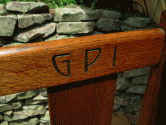5 Ways To Spot a Refinished Antique

But with refinishers having access to original stain and finish formulas, plus the benefit of online and in-print advice from other refinishers, how can a collector know for sure that a piece has not been refinished? With this warm spring weather upon us — perfect for taking an antiquing trip or three — here, then, are 5 tips you should always keep in your back pocket when shopping around for your next antique.(Been antiquing recently or have some fun photos and tips to share from your own adventures? Hop on over to our Facebook page and share them with our readers! We’d love to see what you’ve found!)
#1 – Wear. No piece of furniture survives a hundred years without some signs of wear: dirt around the pulls, dents around the feet, small scratches, worn rungs, even paint splatters. Generally these signs of age are lighter in color, as the stain or dye has been scratched or worn off. If the scratches have been colored, the piece may have been refinished. (See top photograph. Place your cursor over it to enlarge the area.)
#2 – Scars. Chemical strippers tend to drip and run, often onto the side or bottom of a board where they etch the finish. Turn the piece over, pull out drawers and check the back for stripper scars – evidence the original finish has been stripped off. (See lower photograph.)
#3 – Sanding Scratches. Refinishers often revert to sandpaper to remove a finish or erase a dent or scratch. Inspect the area around joints, looking for signs of a recent sanding.
#4 – Scent. Stick your nose inside a bookcase, china cabinet or desk that you know has not been refinished. Inhale deeply. Learn that smell of old shellac. Modern shellac, lacquer and varnish have their own scents – and they don’t smell old.
#5 – Screws. A good refinisher will first remove the hardware. If all of the screws in the pulls and hinges show scratches in the slots from a screwdriver (you’ll need a magnifying glass), be suspicious – and look closer. And if he didn’t remove the hardware, you may see sanding scratches or new finish on top of the pulls and hinges.
TOP – The back of this Roycroft – Grove Park Inn chair doesn’t show any wear, a sign it has been refinished.
LOWER – The scar in this drawer side left by a run of chemical remover is a sign the original finish has been removed. Place your cursor over either photo to enlarge it.

